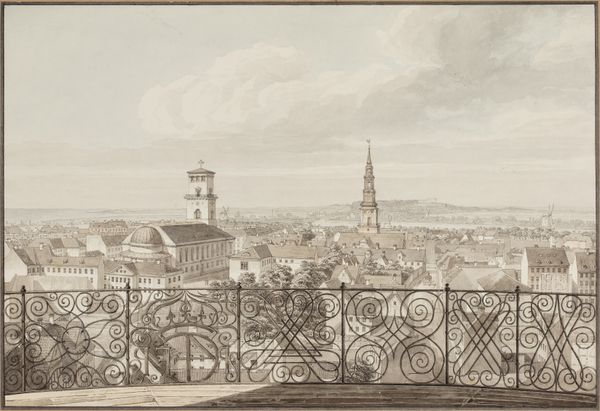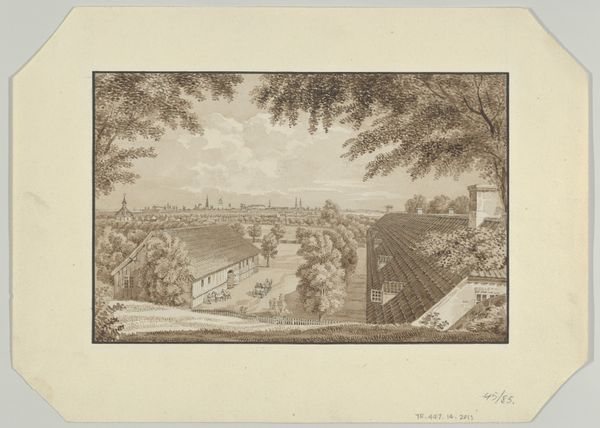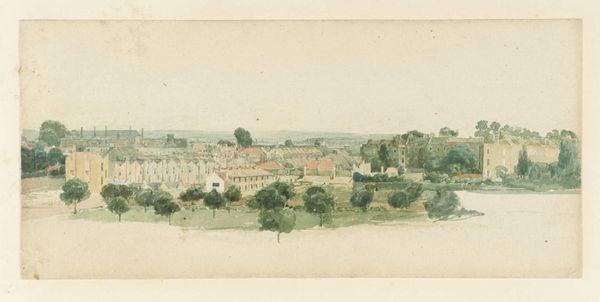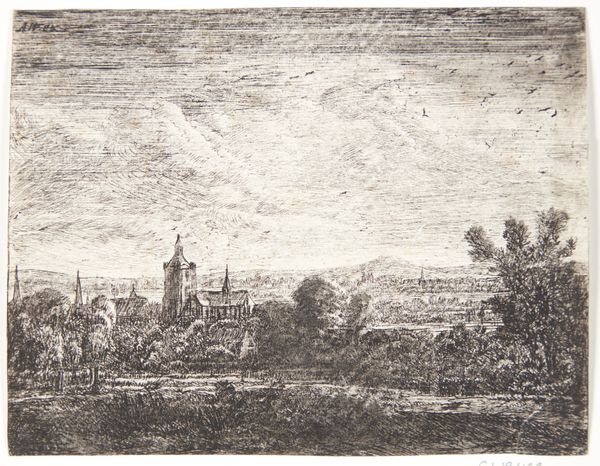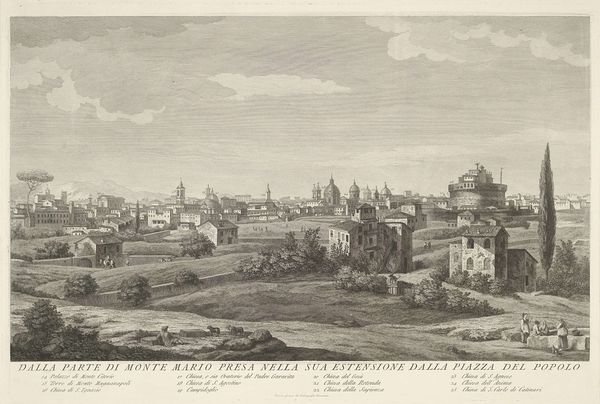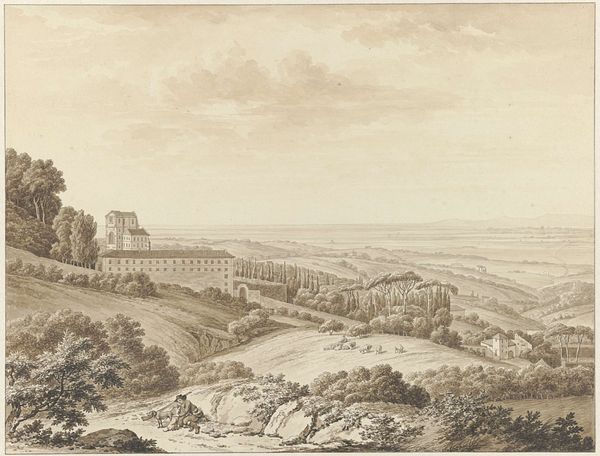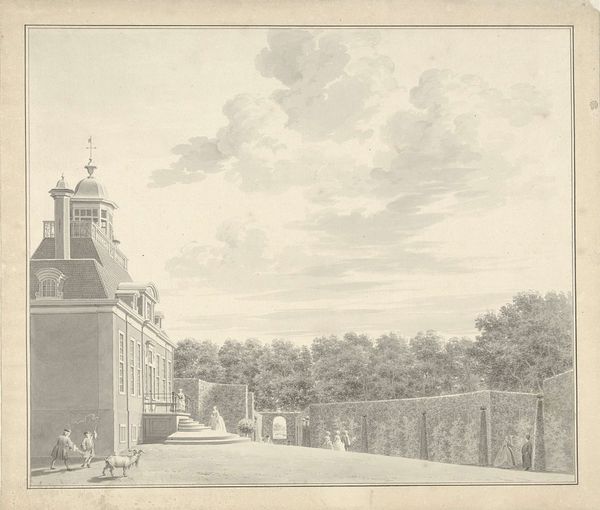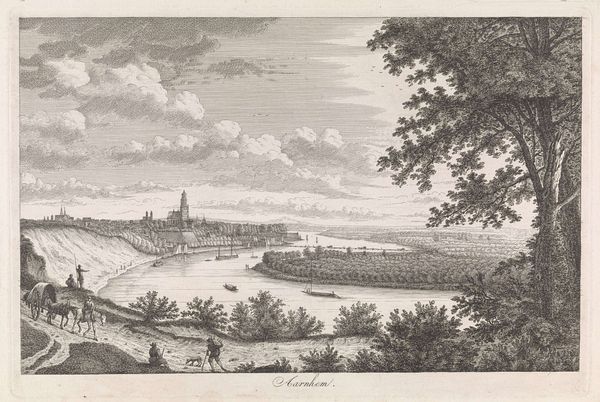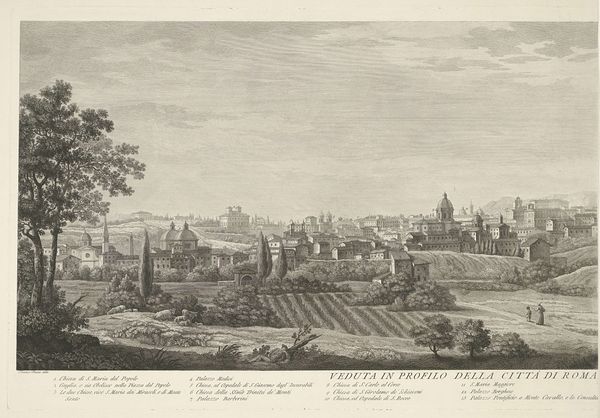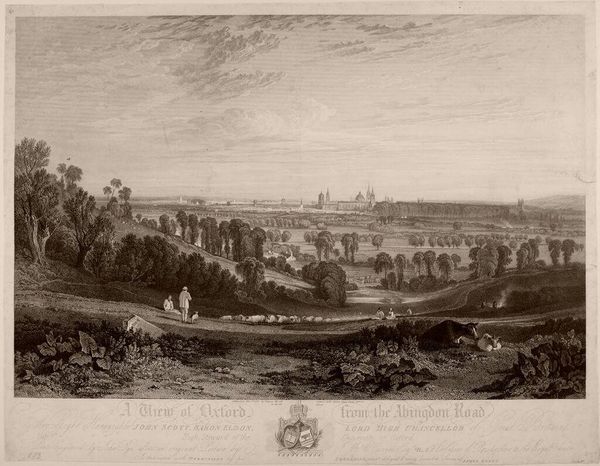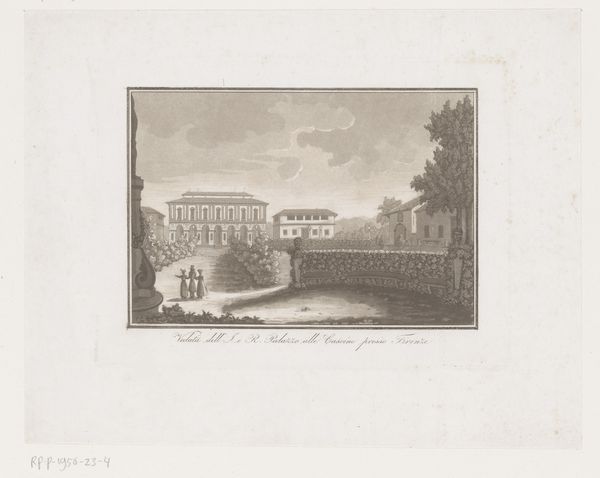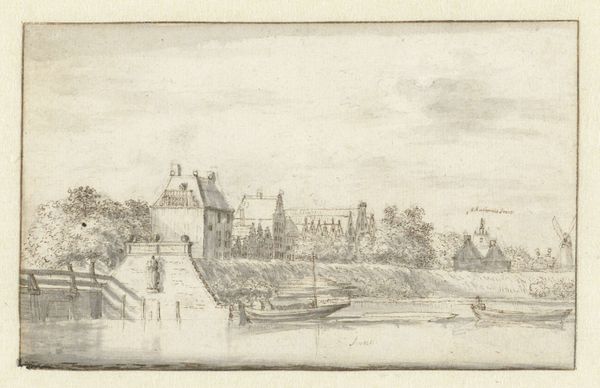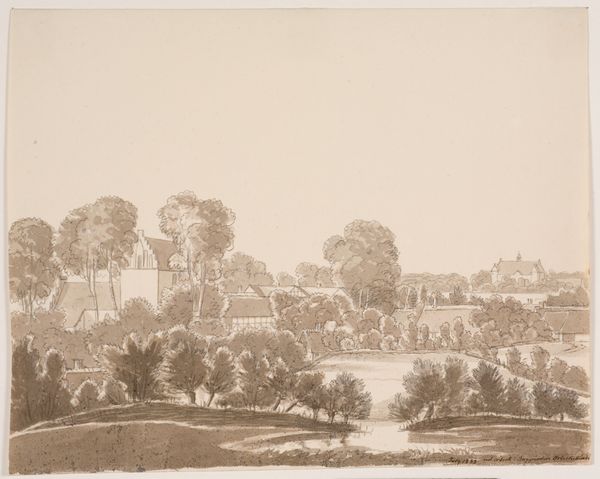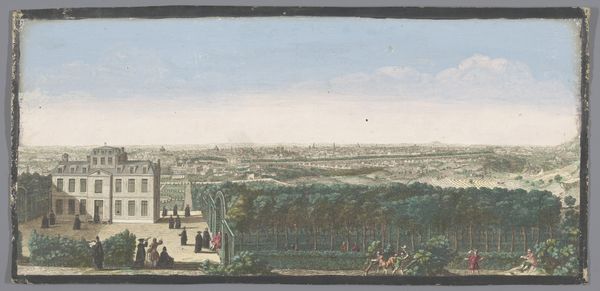
drawing, etching, architecture
#
architectural sketch
#
drawing
#
neoclacissism
#
etching
#
landscape
#
architectural drawing
#
architecture drawing
#
cityscape
#
academic-art
#
architecture
Dimensions: height 331 mm, width 437 mm
Copyright: Rijks Museum: Open Domain
Daniël Dupré rendered this "View of Villa Capizucchi in Rome, with the Porta Pia at the left" in muted tones. The Porta Pia, a gateway on the left, stands as a potent symbol of transition and entry. Consider how the archway, a fundamental architectural form, appears across cultures. From triumphal arches in ancient Rome to city gates in medieval towns, it signifies not just physical passage but also ceremonial and symbolic transformation. The arch represents a threshold. Psychologically, this evokes the crossing of boundaries, like life stages or states of consciousness. Such symbols recur in art history, like Caravaggio's use of light to guide viewers through emotional states. The repetition of these symbols taps into a shared cultural memory, shaping how we perceive and engage with the artwork on a deep, subconscious level. This enduring motif is not linear but cyclical, reappearing and adapting across eras.
Comments
rijksmuseum about 2 years ago
⋮
Here we see Dupré at his best as a draughtsman. The somewhat old-fashioned appearance of his early work, which betrays his former occupation as a wall hanging painter, has given way to a tautly drawn composition with a sophisticated alternating of light and dark, and highly elaborate yet unfussy detailing. At the left is the Porta Pia, the last structure that Michelangelo designed in his last years.
Join the conversation
Join millions of artists and users on Artera today and experience the ultimate creative platform.
